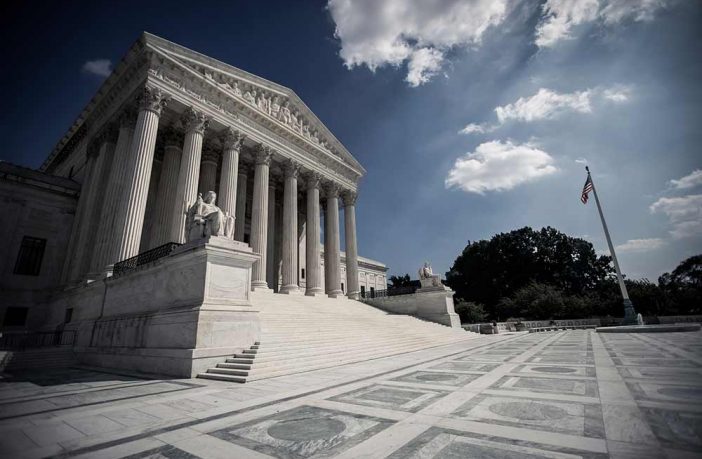The Supreme Court of the United States will be ruling on the Migrant Protection Protocols (MPP) and southern border wall funding within the next calendar year—two major Trump administration immigration initiatives that can drastically affect apprehensions at the southern border.
In January 2019, the Trump administration implemented the MPPs—which require migrants seeking asylum in the United States to wait in Mexico until their court hearing date—as a way to better control illegal immigration and asylum abuse at the southern border.
The program sought to deter migrants with meritless asylum claims from applying for asylum in the United States. A migrant may only qualify for U.S. asylum if they are being persecuted by their government based on their race, religion, nationality, political opinion, or membership to a particular social group.
However, in recent years, the vast majority of migrants had been seeking asylum in order to find better economic conditions and job opportunities in the country. These economic migrants ultimately pushed those with legitimate asylum claims to the back of the line and were creating surges at the southern border that led to apprehension numbers not seen in more than a decade.
The MPPs were also implemented to end the practice of “catch and release,” where apprehended family units and unaccompanied migrant children would be quickly released into the interior of the country due to federal laws that prohibit the prolonged detention of migrants. These aliens often disappeared and were never seen again.
SCOTUS will be ruling on whether Congress granted the president the power to send foreign nationals across the border to wait for their asylum cases to be processed in U.S. immigration courts.
Should the court rule against the MPPs, the southern border could experience a major surge in southern border apprehensions after COVID-19 border restrictions are lifted. The MPPs had an immediate impact on southern border apprehensions. In a little over a year, roughly 60,000 migrants, mostly from the Northern triangle countries of Guatemala, El Salvador, and Honduras, were returned to Mexico. They have also helped in the drastic reduction in overall border apprehensions from last fiscal year to this fiscal year—even when accounting for the COVID-19 pandemic border restrictions. Deterrence is the most effective way to secure our borders and prevent asylum fraud and the MPPs have proven to do just that.
The second case SCOTUS will hear involves the Trump administration’s decision to divert military funding from the Pentagon to help construct the southern border wall after Congress failed to provide sufficient funding. Lower courts have ruled that only Congress has the sole “power of the purse” authority and that the president should not be allowed to divert this funding without its approval.
Should SCOTUS not permit the Trump administration to use $2.5 billion in Pentagon funding to help construct the southern border wall, border apprehensions could surge and return to levels seen in 2019.
In almost every sector along the southern border, physical barriers have proven to curb and deter illegal immigration. When a barrier between the Tucson sector and Nogales, Mexico, was erected in 2000, apprehensions plunged from 40,767 arrests to 20,504 in the following fiscal year —down roughly 50 percent. Similarly, when a border wall was installed in 1992 between the San Diego sector and Tijuana, Mexico, Imperial Beach’s Station apprehensions fell from 202,172 to 165,187, a roughly 20 percent decrease, in one calendar year.
The Supreme Court’s rulings can drastically affect southern border apprehensions. With immigration authorities already stretched thin with personnel, funding, and resources, the border simply cannot experience another migrant surge like the one seen in 2019.




